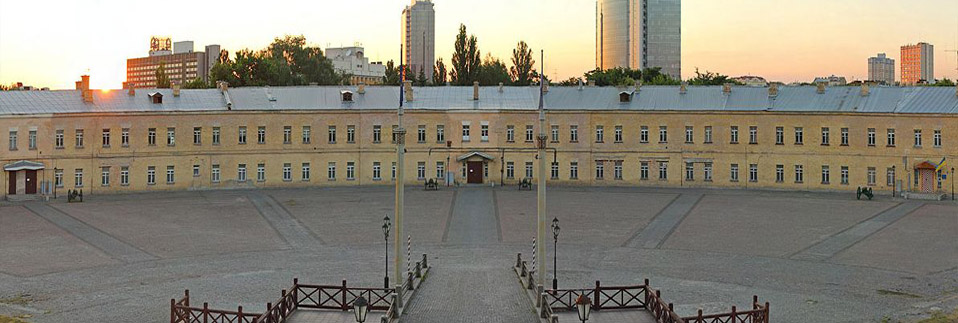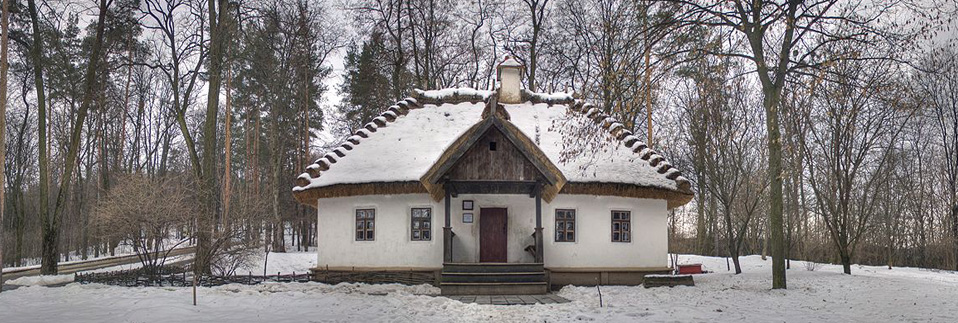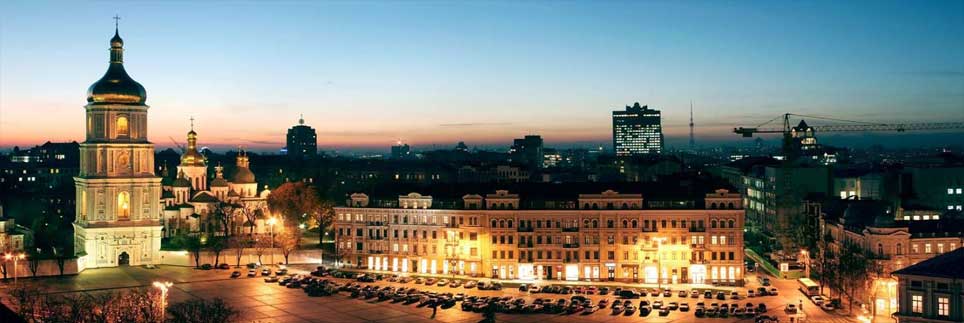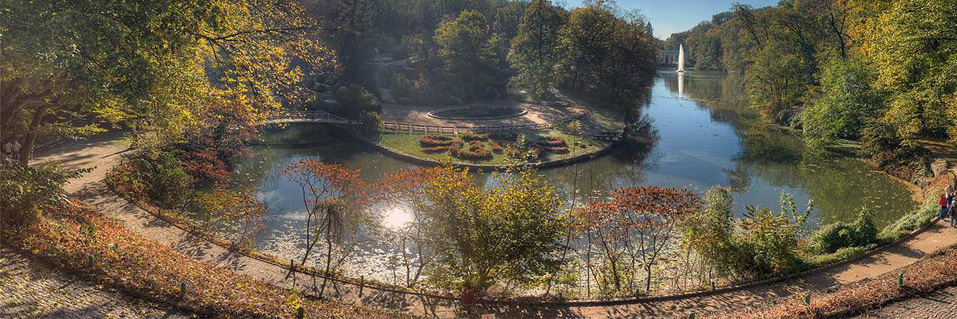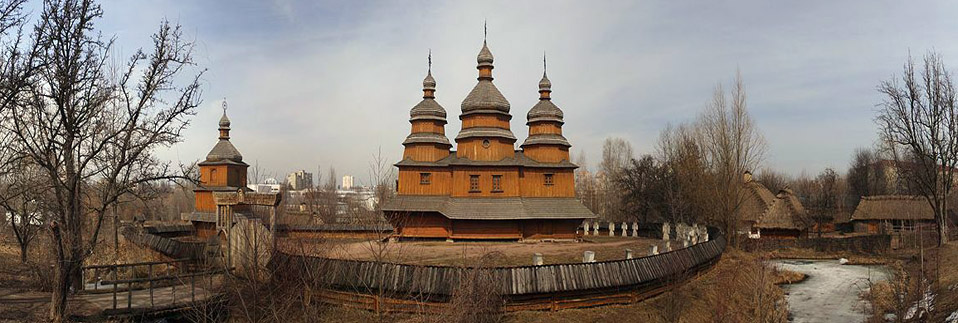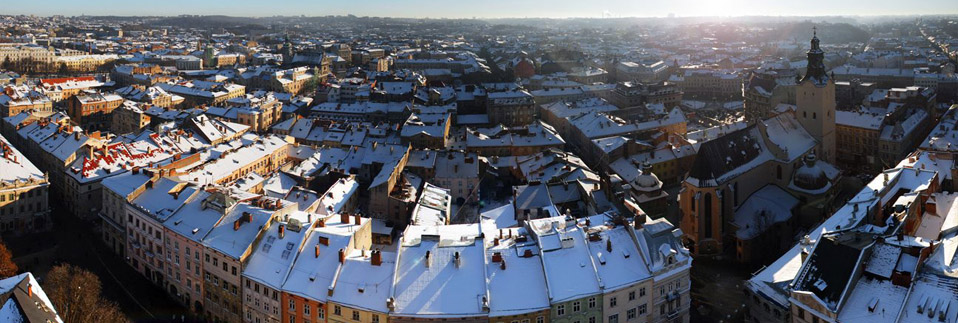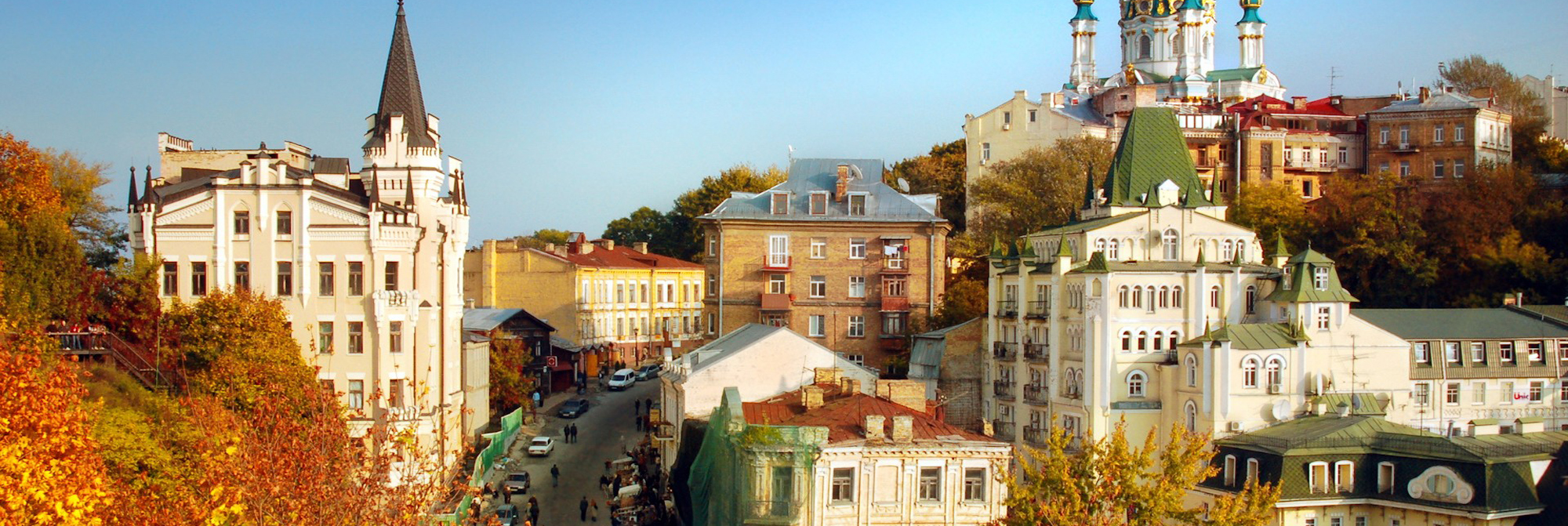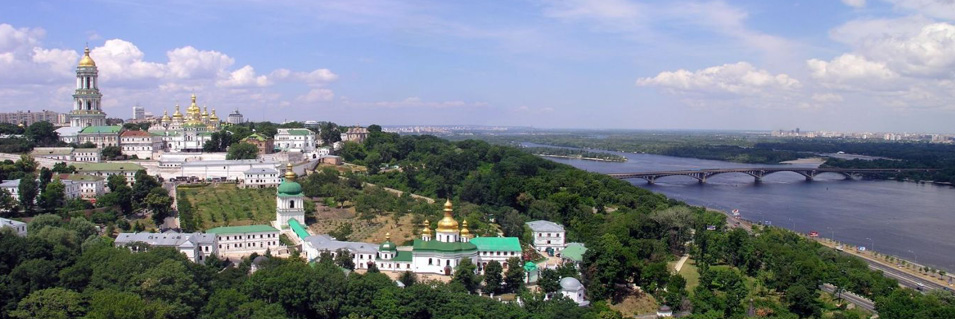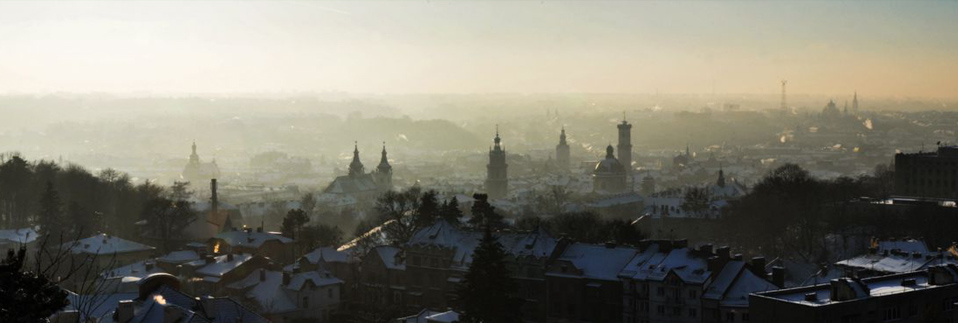Southern Ukraine
Odessa region

 The Odesa land is the territory of the boundles Ukrainian steppe and genial Black Sea. It is situated on the crossroads of the important international ways (the features of geographic position of the region conditioned the entrance of its territory two of nine routes of international transport corridors); Odesa Region is a part of Ukrainian sea front as well as seacoast and boundary region. The state Ukrainian frontier with Romania and Moldova passes on the region's territory. The area of Odesa region makes 33.3 thousand sq. km (5.5% of the territory of Ukraine) that almost equals the sizes of the territory of Republic of Moldova. The population of Odessa Region is 2448.2 thousand people. The region is multinational: Ukrainians, Russians, Jewries, Moldovans and other people live here.
The Odesa land is the territory of the boundles Ukrainian steppe and genial Black Sea. It is situated on the crossroads of the important international ways (the features of geographic position of the region conditioned the entrance of its territory two of nine routes of international transport corridors); Odesa Region is a part of Ukrainian sea front as well as seacoast and boundary region. The state Ukrainian frontier with Romania and Moldova passes on the region's territory. The area of Odesa region makes 33.3 thousand sq. km (5.5% of the territory of Ukraine) that almost equals the sizes of the territory of Republic of Moldova. The population of Odessa Region is 2448.2 thousand people. The region is multinational: Ukrainians, Russians, Jewries, Moldovans and other people live here.
The main tourist destinations of the region are:
 Odessa - With its excellent harbour, the city has become the biggest Ukraine's port and the southern window to Europe. This most sociable city deserves all the sunshine it gets. Much of Odessa jubilant reputation lies in the fame and glory of the past, The city has not changed much over the years and still holds true to these customs of diversity, culture and hospitality, Yet even without the historical context, Odessa is a beautiful city by the sea. Tall trees shade the cobblestone boulevards and the decorated palaces-turned-museums add distinctive French and Italian styles to the present display.
Odessa - With its excellent harbour, the city has become the biggest Ukraine's port and the southern window to Europe. This most sociable city deserves all the sunshine it gets. Much of Odessa jubilant reputation lies in the fame and glory of the past, The city has not changed much over the years and still holds true to these customs of diversity, culture and hospitality, Yet even without the historical context, Odessa is a beautiful city by the sea. Tall trees shade the cobblestone boulevards and the decorated palaces-turned-museums add distinctive French and Italian styles to the present display.
Odessa is also a king of the Catacombs with over 100km of tunnels dug into the sandstone the city stands on, The Odessa catacombs are all manmade. These tunnels were used for all the city's clandestine activities, which have been numerous. At only 200 years old, Odessa is one of Europe's younger cities with the neo-classical buildings that date back to the Russia's gilded age. In 1803 Tsar Alexander I committed the governorship of the city to Duke de Richelieu, The governor slashed trade duties and officially dedicated one-fifth of the port's income to "making the city beautiful". Granted the status of a free port in 1815, Odessa swiftly rose to the third place in the Russian Empire after Moscow and St Petersburg. The Frenchman is now revered as the father of Odessa, and his statue stands at the top of the famed Potemkin stairs.
Most outsiders will recognize the Potemkin Steps from Sergei Eisenstein's immortal movie, the "Battleship Potemkin", the greatest film ever made. Usually cities are known for their towers, statues, or buildings, but Odessa is best symbolized by the massive stone descent from Primorsky Boulevard to the pier, Climbing up (or down) the 192 uneven granite steps can be a task, but it's worth seeing both ends, for the stairs were built as an illusion: the lower stairs are much wider than the top, so that the width appears uniform if to face the stairs from above. The steps are best viewed from the bottom due to their gradual narrowing towards the top making them seem higher and more majestic from below.
Since its foundation Odessa has grown into a cosmopolitan city where people of more than a hundred nationalities live. Russians, Ukrainians, Jews, Greeks, Bulgarians, Turks have all played roles in Odessa history. Odessa's super strong urban solidarity tends to supersede any national allegiance and that has changed little under independent Ukraine. In many ways Odessa has more local character than any other city in the country. The citizens of Odessa are renowned for their sharp wit and canny trading abilities, By reputation "Odessitets" are incorrigible jesters, smooth talkers, and a little shifty - it's no coincidence that the city celebrates "Odessa Day" on April 1.
Odessa Fine Art Museum houses one of the largest in Ukraine collections of Russian and Ukrainian masterpieces. The collections boast magnificent and artistically unique works of great masters reflecting the development of national art from the icon painting of the 15th-18th centuries to the contemporary art.
It's advisable not to miss a night at the impressive Opera and Ballet Theatre built by Austrian architects in 1887. Today it is considered to be one of the world's finest buildings.
Bilhorod-Dnistrovskyi - The ancient town rests on the southern shore of the Dnister River estuary, a strategic spot for its entrance to Moldova and Galicia. Dating back to the 6th century BC as strong Greek settlement it became later important Roman city-fortress Tyra. However, visitors today come to see the mighty fortress, built in the 15th century to defend Moldova from Turkish invasion, Alas, the Turks prevailed in 1484, and for the next 400 years the town and the battlement were known as Akkerman.
When in Bilhorod you can't help but be intoxicated by the majesty of the ages of its monuments. It's ambling stonewalls and impressive foundations marking out the grand scale of this 2,500 year old depot. Turn right from Tira ruins and you'll find yourself looking up at one of the mightiest, best preserved fortresses across the Black Sea coastal strip. It stands majestic above the little town, a monument to the prosperity and ingenuity of this once bustling port.
To learn more about sights, excursions and tours in this region click here
Kherson region

 Kherson Region is washed by the Black Sea and Sea of Azov. On the east it borders with Zaporizhzhya Region as well as north-west - Mykolayiv Region, north - Dnipropetrovs'k Region and south - Crimean Autonomous Republic. The state frontier with the length of 458 km passes on the region's territory including 350 km of the Black Sea and 108 km of the Sea of Azov. There are located four check points on the border such as air-port, river port, sea ports of Kherson and Skadovsk. Its territory is 28.5 thousand square m or 4.7% of the general territory of Ukraine. The number of population is 1150.9 thousand people.
Kherson Region is washed by the Black Sea and Sea of Azov. On the east it borders with Zaporizhzhya Region as well as north-west - Mykolayiv Region, north - Dnipropetrovs'k Region and south - Crimean Autonomous Republic. The state frontier with the length of 458 km passes on the region's territory including 350 km of the Black Sea and 108 km of the Sea of Azov. There are located four check points on the border such as air-port, river port, sea ports of Kherson and Skadovsk. Its territory is 28.5 thousand square m or 4.7% of the general territory of Ukraine. The number of population is 1150.9 thousand people.
Half land, half water, Ukraine's southern coastline surrenders vaguely to the Black Sea in a spread of wetlands, estuaries, wide river deltas, sandbar islands and beaches. Ukraine's four largest rivers - the Danube, Dnipro, Dnister, Southern Buh - all empty into the sea in Kherson region.
 The city of Kherson came into being by decree of Catherine the Great in 1778. It offers no great single attraction, but this is the obvious base from which to visit the region. Nearby areas are frequented by the tourists: Kherson's Wetlands. Here, travellers are granted a glimpse of people whose lives are connected to the river.
The city of Kherson came into being by decree of Catherine the Great in 1778. It offers no great single attraction, but this is the obvious base from which to visit the region. Nearby areas are frequented by the tourists: Kherson's Wetlands. Here, travellers are granted a glimpse of people whose lives are connected to the river.
Not far away is the Black Sea Biosphere Preserve, established to protect bird habitats. Much of the reserve is permanently closed to tourists, but there are certain locations where visitors can see rare species in migration, including flamingos, black-winged stilts, and great white pelicans.
A trip on a pleasure boat to a Fishermen Village in the Dnipro's delta is a must on all the cruise itineraries in Kherson that makes huge impression on passengers who never miss the chance to feel unforgettable Ukrainian hospitality that is doubled by traditional cuisine and wine-and-vodka-tasting experience.
 If you are a nature-lover board a coach tour to the wild life preserve "Askania - Nova" - you won't feel sorry! This wildlife conservation of 100 square killometres virgin Ukrainian steppe somehow missed mass cultivation and exists today as the only natural landscape left in Europe. It was set aside as a nature park over 150 years ago that attracts so much interest now. Today the park consists of various zones, some of each remain completely untouched and inaccessible - relics of Ukraine's original ecosystem. This is the only place in Europe to see a Przewalski horse "in the wild". Askania's open zoo follows a slightly "world communist" mentality, advertising herds of animals from six different continents.
If you are a nature-lover board a coach tour to the wild life preserve "Askania - Nova" - you won't feel sorry! This wildlife conservation of 100 square killometres virgin Ukrainian steppe somehow missed mass cultivation and exists today as the only natural landscape left in Europe. It was set aside as a nature park over 150 years ago that attracts so much interest now. Today the park consists of various zones, some of each remain completely untouched and inaccessible - relics of Ukraine's original ecosystem. This is the only place in Europe to see a Przewalski horse "in the wild". Askania's open zoo follows a slightly "world communist" mentality, advertising herds of animals from six different continents.
To learn more about sights, excursions and tours in this region click here
Nykolaev Region

 The boundless fields of Pobuzhzhya and Ingul River region, green vineyards and wonderful flowering gardens under bottomless blue sky is Mykolayiv land.
The boundless fields of Pobuzhzhya and Ingul River region, green vineyards and wonderful flowering gardens under bottomless blue sky is Mykolayiv land.
Located in the southernmost part of Ukraine in the Black Sea Lowland, exiting on the Black Sea. The northern part of the region lies within the Dnipro Upland. The climate is temperate-continental, and partly maritime.
 Nikolaev - City and regional center located on the banks of the Buzk River estuary. The territory of the city was settled in ancient times. The remains of settlements from the Neolithic Age, ancient cemeteries of the early Bronze Age, settlements of the late Bronze Age, the Greek-Roman period, and the early Slavonic period (the 5th-4th cent.) have been excavated.
Nikolaev - City and regional center located on the banks of the Buzk River estuary. The territory of the city was settled in ancient times. The remains of settlements from the Neolithic Age, ancient cemeteries of the early Bronze Age, settlements of the late Bronze Age, the Greek-Roman period, and the early Slavonic period (the 5th-4th cent.) have been excavated.
Nykolaev was founded in 1789 and named after St. Nicholas (Mykola) in honor of the Kozak capture of the Turkish fortress Ochakiv on this saint's day. Life in the city was intimately tied to the sea fleet. The headquarters of the Black Sea Fleet and the shipbuilding industry were located here. During the Soviet period Mykolayiv was the largest shipbuilding center in the Soviet Union.
The first astronomical observatory in Ukraine was founded here in 1827.
Zaporozhye Region

 Zaporozhye - A glorious page in the history of Ukraine is associated with the Zaporozhian Cossacks, In 16th century the Cossacks came to the island of Khortytsya - the cradle of Cossacks (which is now a home to historical and cultural preserve), They founded a fortress town and the first universal movement for Ukrainian independence. Hence a new brand of a fighter emerged, dedicated to protecting his crops, family and land, They became talented horse riders and disciplined warriors, earning their place as the genuine heroes of Ukrainian folklore. They gave the country its national costume and many of its folk songs and dances.
Zaporozhye - A glorious page in the history of Ukraine is associated with the Zaporozhian Cossacks, In 16th century the Cossacks came to the island of Khortytsya - the cradle of Cossacks (which is now a home to historical and cultural preserve), They founded a fortress town and the first universal movement for Ukrainian independence. Hence a new brand of a fighter emerged, dedicated to protecting his crops, family and land, They became talented horse riders and disciplined warriors, earning their place as the genuine heroes of Ukrainian folklore. They gave the country its national costume and many of its folk songs and dances.
 Trained and prepared, they still spent most of their time on the farm, gathering only when it was necessary to fend off invaders or to attack enemy cities, It was these enemies that christened them "Cossacks", the Turkic word for "freeman". They were outsiders, excluded from any surrounding civilizations, and who in turn had established their own loose-fitting system of rule of law and sword, The Zaporozhian Sich became the unofficial headquarters of the Cossacks, Leaders were elected to be the "hetmans" but had no power during peacetime. Only during the campaign could they enforce strict discipline.
Trained and prepared, they still spent most of their time on the farm, gathering only when it was necessary to fend off invaders or to attack enemy cities, It was these enemies that christened them "Cossacks", the Turkic word for "freeman". They were outsiders, excluded from any surrounding civilizations, and who in turn had established their own loose-fitting system of rule of law and sword, The Zaporozhian Sich became the unofficial headquarters of the Cossacks, Leaders were elected to be the "hetmans" but had no power during peacetime. Only during the campaign could they enforce strict discipline.
When visiting Zaporozhye the Equestrian Show is a must. Tourists have the chance to see the descendants of bygone Cossacks in real traditional costumes riding on the horseback like the wind, upside down, facing back, standing on their hands, lying, hanging under the horse's tummy and, of course, they are great vodka lovers, Afterwards tourists are invited to take part in Cossacks' games and to taste traditional Cossack meals and drinks.


